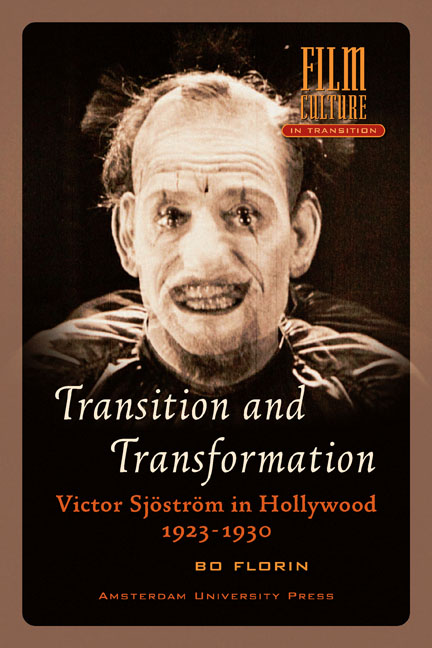Book contents
- Frontmatter
- Contents
- Acknowledgements
- Introduction – From Sjöström to Seastrom
- Sjöström – From National to International
- A European in Hollywood – NAME THE MAN and the Shift of Production Systems
- From Scientist to Clown – HE WHO GETS SLAPPED
- A for Adultery – THE SCARLET LETTER
- Conquering Nature – THE WIND
- Fragmented Pieces – Writing the History of the Lost Hollywood Films
- The Shadow of the Silents – A LADY TO LOVE
- The Genius and the System– Some Concluding Remarks
- Notes
- Bibliography
- Filmography
- Index
- Film Culture in Transition
Conquering Nature – THE WIND
Published online by Cambridge University Press: 22 December 2020
- Frontmatter
- Contents
- Acknowledgements
- Introduction – From Sjöström to Seastrom
- Sjöström – From National to International
- A European in Hollywood – NAME THE MAN and the Shift of Production Systems
- From Scientist to Clown – HE WHO GETS SLAPPED
- A for Adultery – THE SCARLET LETTER
- Conquering Nature – THE WIND
- Fragmented Pieces – Writing the History of the Lost Hollywood Films
- The Shadow of the Silents – A LADY TO LOVE
- The Genius and the System– Some Concluding Remarks
- Notes
- Bibliography
- Filmography
- Index
- Film Culture in Transition
Summary
“Man – puny but irresistible – encroaching forever on Nature's vastnesses, gradually, very gradually wresting away her strange secrets, subduing her fierce elements – conquers the earth!” This introductory intertitle from Victor Sjöström's sixth Hollywood film, THE WIND (1928), based on a 1925 novel with the same title by Dorothy Scarborough, opens the story in evoking a grandiose register. Scarborough, however, interestingly enough, was not only a novelist, but also an English professor, whose dissertation dealt with Gothic themes which she then developed in her own writing, not least in The Wind. The script credit was, as with THE SCARLET LETTER, given to Frances Marion. In the following, the film will be examined in close detail: not only its text, but also the relation to some of its contexts: the Western genre, Gothic tradition, Scandinavian landscape. These relationships are not entirely unproblematic. According to Susan Kollin, who has analyzed the novel in depth, “the film overlooked much of the novel's critique of frontier attitudes about labor, race, and national identity”, not surprisingly in the hope of a more general appeal to the potential film audience.
The story of the film itself is easily summarized: Letty, an orphan, seeks refuge with her cousin, whose wife, however, views her as a rival. Left with no other choice, she marries their neighbour, Lige, but she finds him frightening and abhorrent, and he resolves not to force himself on her. During a storm, the cattle dealer Roddy rapes Letty. This is shown only symbolically, in Graham Petrie's words: “through the physical violence of the wind itself and the traditional sexual symbolism of the stallion”. She shoots him in self-defence. Despite her shock, she struggles to bury him in the sand, an impossible task in the very strong wind. Finally nature does the job itself, the wind covering him with sand. The initial version of the film ends with the crazed Letty receding into the storm, just like in Roddy's initial account of what – according to an Indian legend – happens to women; they become mad in the wind. In the final version, however, a happy ending was tagged on at the request of Irving Thalberg (in spite of the scriptwriter's protests: “But no happy ending, Irving, Please not that!”).
- Type
- Chapter
- Information
- Transition and TransformationVictor Sjöström in Hollywood 1923–1930, pp. 79 - 98Publisher: Amsterdam University PressPrint publication year: 2013



